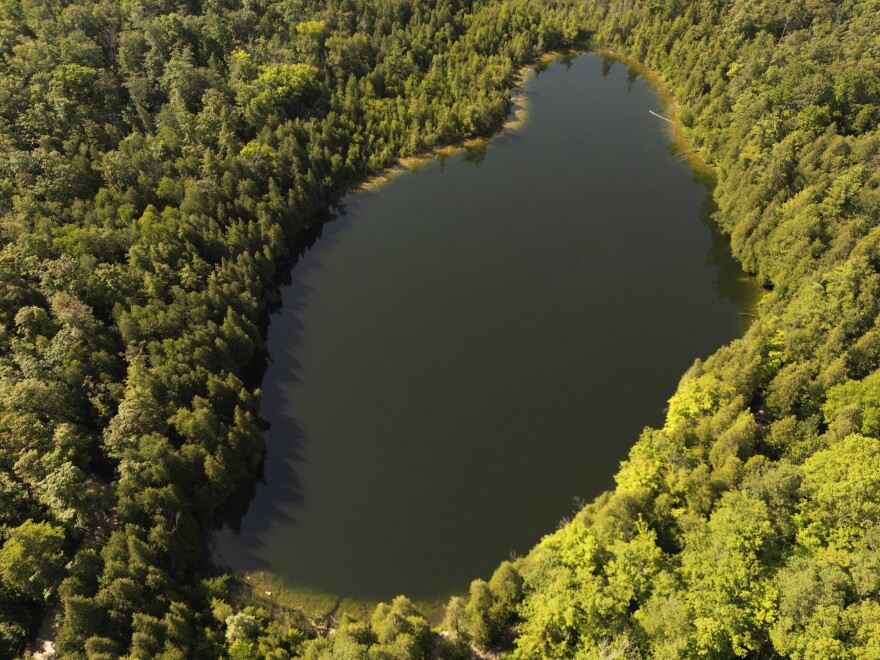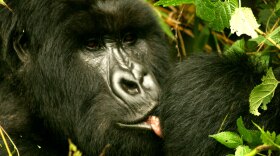Every other Friday, the Outside/In team answers a listener question about the natural world. This week’s question comes from Emily in Washington, DC.
How do historians decide how to categorize chunks of time? And why is it the further back we go, the bigger the time periods are? Like, the different dinosaur periods were millions of years. In comparison, the life humans live today is very fast paced. So, how do we determine the borders between time periods?
The geological time scale

The answer to this question depends who you ask. Geologists categorize time by looking at changes they see in the earth’s rock or sediment layers. Take the very dramatic example of the end of the Mesozoic era, when dinosaurs went extinct. In one layer you’ll see lots of fossils, then a layer of iridium brought to earth by the dinosaur-killing asteroid, and then a layer on top of that which has very few fossils.
Geologists have an official process for proposing and agreeing upon these reference points. They commemorate them with what are called Global Boundary Stratotype Section and Points, also called “golden spikes.”
Currently, we’re in the Holocene epoch of the geological time scale, which started about 11,700 years ago. However, a group of geologists are proposing that we’ve entered a new epoch called the “Anthropocene”, marked by human influence on the planet. They argue it began in 1950, and would place a “golden spike” at Crawford Lake in Canada because there are traces of nuclear bomb tests at the bottom of the lake. The proposal still needs to be approved by three different groups of scientists and could be signed off at a major conference next year.
Historical periodization
Historians don’t bother with “golden spikes” or officially-agreed upon categorizations of the past. Popular grade-school lessons about the Stone and Bronze Age, for example, are now criticized as overly Eurocentric notions of history.
The "Little Ice Age” is a period of time when average global temperatures dropped by as much as 2 degrees Celsius, but historians don’t agree on when it began.
Some say it started with big volcanic eruptions in the 13th century, which led to famines in Europe. Others say it didn’t start until the 16th century, when global circulation patterns in the oceans and atmosphere impacted populations worldwide. The starting point one chooses depends on what part of the story they want to emphasize.

Is time moving faster?
If it seems like historical time periods (the civil rights era) are shorter than geological ones (the Jurassic) it’s because they are. Historians are categorizing smaller periods of human history, as opposed to geological periods of the whole planet.
But our question-asker, Emily, might be onto something when it comes to how fast human history is now unfolding.
Anatomically modern humans have only been around for the past 300,000 years. For the vast majority of that time – about 290,000 years – humans were hunters and gatherers. And just in the last century or two industrialization has caused an explosion in human population, technology, and living standards. Some are even calling it “The Great Acceleration” because of how fast everything is changing.
So, just how quickly are we speeding into the Anthropocene and other future time periods? We’ll just have to wait and see.
Submit your question about the natural world to the Outside/In team. You can record it as a voice memo on your smartphone and send it to outsidein@nhpr.org or call the hotline, 1-844-GO-OTTER.
Outside/In is a podcast! Subscribe wherever you get yours.









